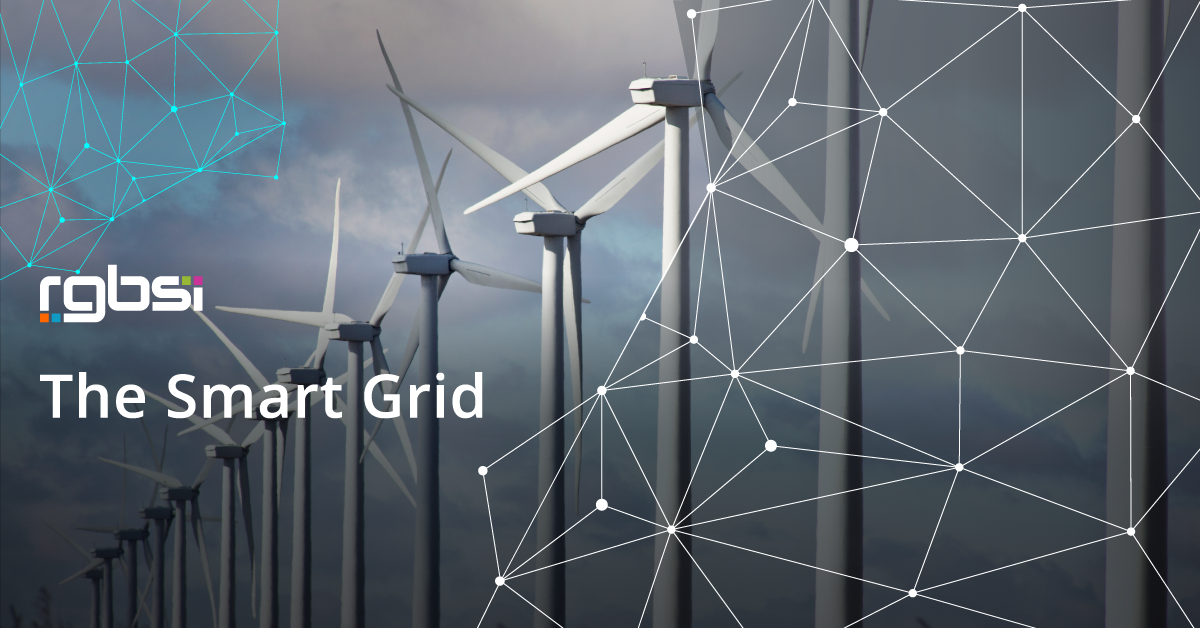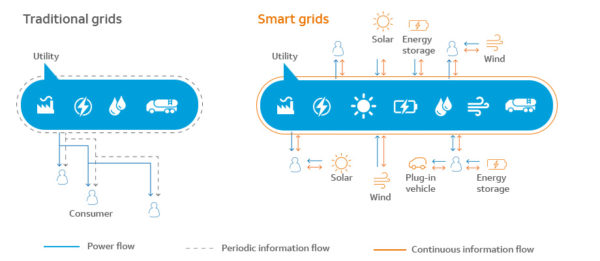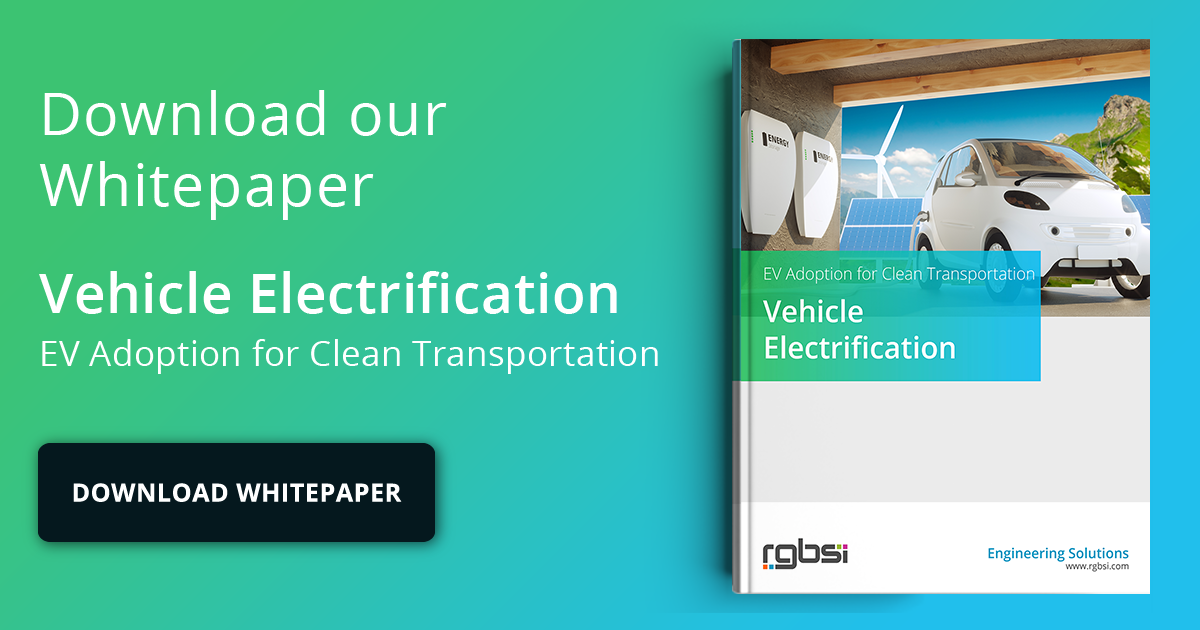
Did you know that our current electric grid consists of over 9,200 electric units dependent on more than 300,000 miles of transmission lines for power distribution which may exceed 1,000,000 megawatts in generating capacity at any given time?
As the complex needs of electricity expand due to digitization and technological advancement, it becomes more critical to have an electric grid equipped to handle such innovation. The concept of the smart grid amplifies our existent electric grid with by giving utilities the flexibility to respond to fluctuations in electric demand.
What is the smart grid?
A smart grid uses technology to operate and distribute electricity more efficiently. Distribution technology and automation tools establish a two-way connection between utilities and consumers. For example, this is essential for electrification of transport, allowing electric vehicles to become grid assets by returning stored energy to the grid. Smart grid technology such as sensors, meters, and big data & analytics are used to improve overall power system performance. Focus from power generation is shifting to distribution and management.
How does a smart grid work?
By leveraging interconnectivity, the smart grid aims to support power infrastructure vs. imped stress upon it. Smart grid technologies such as smart meters provide access to energy based on demand peaks and availability. Consumers become more aware of their energy consumption when the price fluctuates based on levels of demand.
The smart grid takes a holistic approach to energy distribution by increasing consumption efficiency and reducing waste. It supports multi-source energy access and distribution. For example, the variability that exists with renewable energy such as solar and wind power is offset by working in tandem with traditional energy sources.
Traditional vs Smart Grids

Source: Survey of Big Data Role in Smart Grids: Definitions, Applications, Challenges, and Solutions
Components of the Smart Grid
Smart meters
- Meter technology that digitally sends actual individual energy usage to the utility provider without the need for manual meter reads.
Multi-source power generation and storage
- This optimizes distributed energy sources by accounting for renewable energy sources (solar, wind, geothermal, biomass, and hydro) and fossil-fuel based sources.
Energy storage
- Technology such as battery storage technology offset peak loads in supply and demand for power by maximizing the usefulness of distributed and renewable energy. This encourages smooth delivery of power without interruption or outages.
Integrated communications
- A real-time data exchange between consumers and utilities exists to create a consumer driven energy system.
Sensors
- Measurement and sensory technology used to conduct a comprehensive evaluation of any given utility in managing load balancing and equipment operability. This includes monitoring voltage, phase angle, transformer state and a variety of other grid hardware.
The connection between electric vehicles and the smart grid
Obviously, electric vehicles are on the rise as the world transitions into one of sustainability, deriving energy from clean sources. Electric vehicles have the potential to act as power bank for the smart grid using bidirectional communication.
For instance, EVs can be charged using clean energy from wind and solar energy sources and discharge a small fraction of such energy back to the grid during periods of peak demand. Although electric vehicles create an upsurge in demand for electricity, they also can be a key asset for the future of mobility in storing power and supplying power back to the smart grid.
About RGBSI
At RGBSI, we deliver total workforce management, engineering, quality lifecycle management, and IT solutions that provide strategic partnership for organizations of all sizes.
Engineering Solutions
As an organization of engineering experts, we understand the importance of modernization. By pairing modern technology with design expertise, we elevate fundamental engineering principles to accommodate growing product complexity requirements. We work with clients to unlock the full potential of their products and enable future innovation. Learn more about our engineering services.











